This story was originally published in the September 2010 issue of Street Machine magazine
YOU’RE probably thinking that an E-Type Jaguar isn’t typical Street Machine fare, and you’re right. A true British classic, more often than not they’re faithfully restored to concours condition and original specifications, and driven as sedately as they are rarely. Not really our bag, but each to their own. This however, is no ordinary Jaguar.
“It’s probably one of the most evocative designs ever built,” the owner, Geoff, says. “But the car always had the traditional 1960s British engineering limitations, so the purpose of this project was to make a vehicle that lived up to the design and the shape of the car.” Nothing like a 550rwhp twin-turbo American V8 to correct a few Pomgolian engineering oversights!
As a 1970 2+2 hardtop, the car isn’t the most sought after of the E-Type range, so Geoff felt relatively comfortable about putting it under the knife. And after chatting to a number of prospective shops about taking on the build, Oz Rods in Brisbane got the nod.
“Geoff just walked in off the street and spoke to us about the car. Not long afterwards he called and asked us to send a tilt-tray around to his house to pick it up,” Graeme from Oz Rods says. “We did the whole build, except for the tune, in-house and it took around 12 months from start to finish.”
While he left the ins and outs of the process in the capable hands of the Oz Rods team, Geoff was very specific about what he required of the finished product. “It had to be reliable, the electrics had to work, and it had to have at least 500hp at the wheels, but I made it clear that I didn’t want them to break the external skin of the car,” he says. No sense in altering such a timeless design.
Bearing in mind that the brief called for performance without compromising reliability (and that Geoff wanted to enjoy the sound of a bent eight beating away beneath the bonnet), a low-boost twin-turbo LS2 and T56 six-speed made perfect sense. Oz Rods spanner man Danny had the task of mounting it between the Jag’s rails, which he had to displace a little to aid the process. Danny was also responsible for building the turbo system, including that stunningly symmetrical air-to-air intercooler. With an inlet either side and a single four-inch outlet straight over the top of the radiator and into the throttlebody, it uses a PWR core and was TIG’d up in about a day and a half.
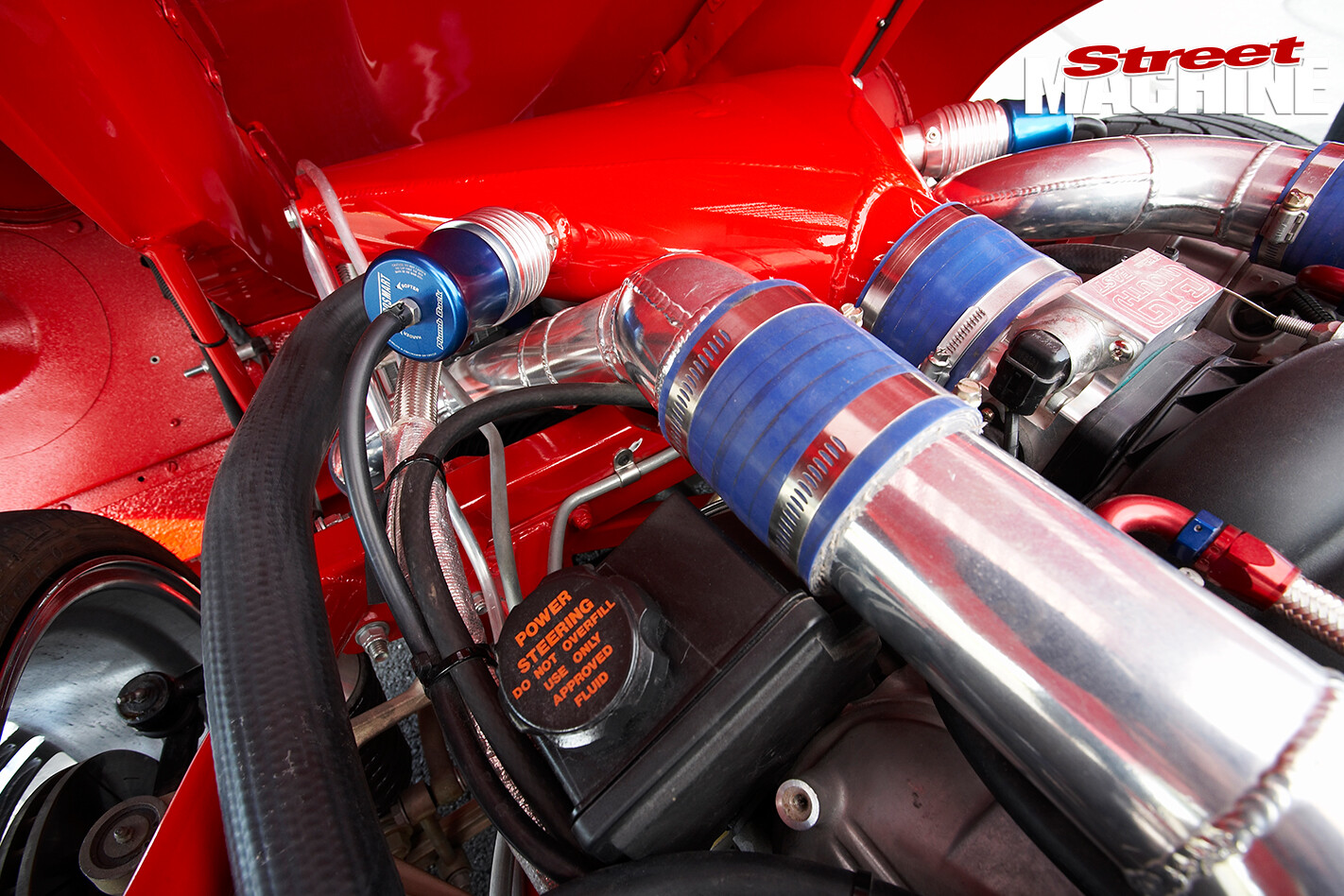 The front end of the chassis was comprehensively re-engineered due to the tight confines of the Jag’s sloping nosecone
The front end of the chassis was comprehensively re-engineered due to the tight confines of the Jag’s sloping nosecone
“We were running out of room at the front of the engine so we had to use a short, wide radiator, with the intercooler out the front,” Danny says. “There’s also an air-conditioning condenser in front of the intercooler, but even in traffic it still stays cool.”
With so much grunt on offer from the twin-turbo Chev, no end of effort was invested in getting the chassis, suspension and brakes up to scratch.
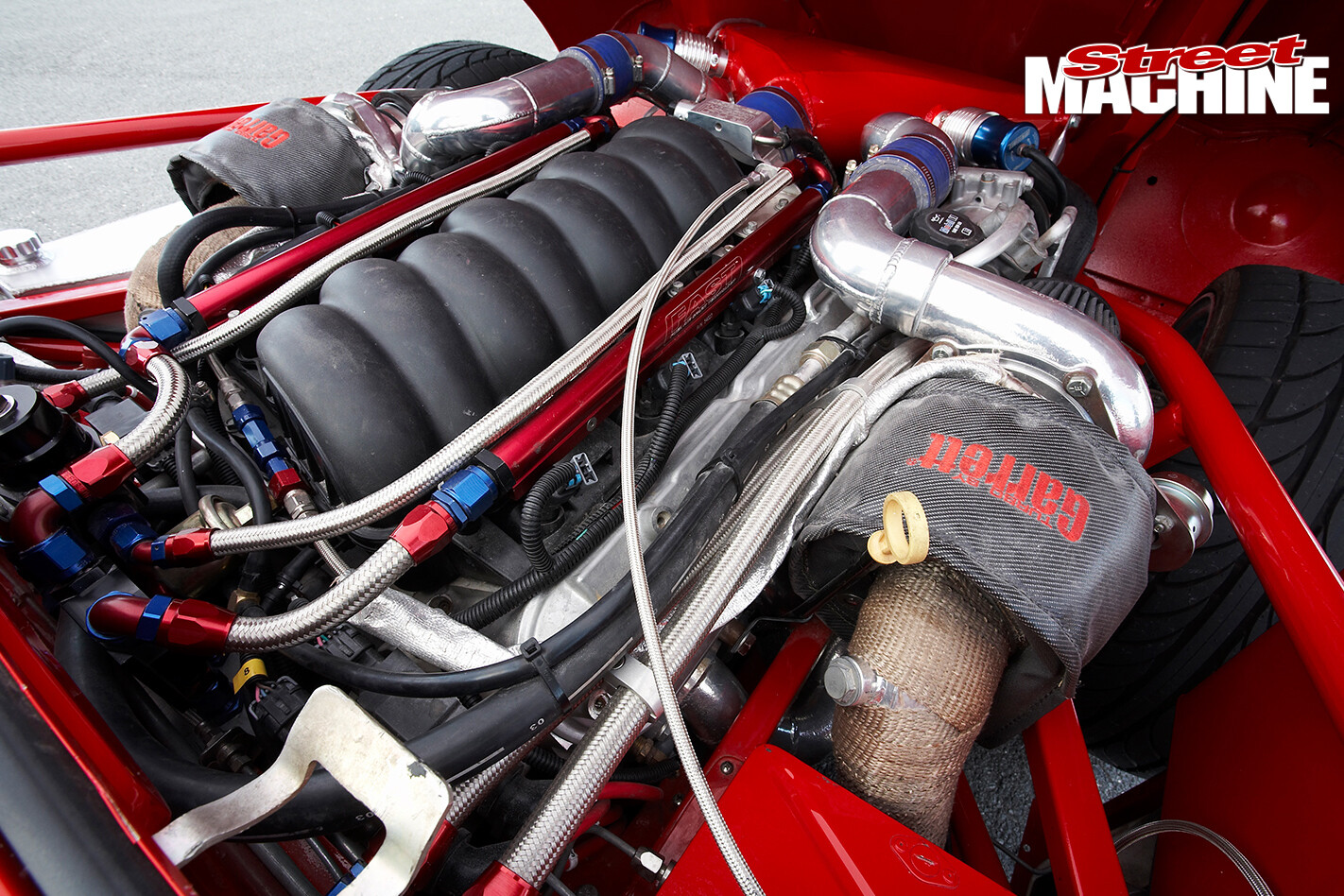 Extra rails were added from the firewall to the front support, and 50x50mm chassis connectors now run from front to rear, countersunk into the floorpan through the existing channels where the seat rails bolt down. There’s a half ’cage, too, but it’s so well integrated with the cabin that you’d do well to spot it from the outside.
Extra rails were added from the firewall to the front support, and 50x50mm chassis connectors now run from front to rear, countersunk into the floorpan through the existing channels where the seat rails bolt down. There’s a half ’cage, too, but it’s so well integrated with the cabin that you’d do well to spot it from the outside.
Coil-overs replace the archaic torsion bar front end for much more progressive and predictable steering and handling, while there’s another set of coil-overs out back, either side of a V12 XJS IRS rear end with a Dana 44 posi-loc centre. Torque bars aid traction, and the car hooks up remarkably well considering its 550rwhp output and IRS suspension configuration. Anchors are high-end Jaguar equipment, with dinner plate-sized disc rotors and four-piston XJS calipers up front. Just as well really, considering that the car is rumoured to be capable of 120mph in third gear.
If Geoff were to drive it like that all the time though, the Jag would empty a standard-sized fuel tank in no time flat. The custom tank the Oz Rods boys fabricated is not only beautiful to look at, but with an inbuilt recess for a space-saver spare, it’s also extremely practical and designed with the requirements of the end user in mind.
“The tank was designed so that boot space is retained,” says Geoff. “My wife and I want to tour and it now has a larger tank to take this into account.”
Graeme, the proprietor of Oz Rods, let us in on the real reason though. Apparently it’s nothing for Geoff to chuck his golf clubs in the back of the Jag and cruise down to his local club for a whack on the weekend. How cool is that?
“I drive it every day. It’s no good to me sitting in the shed. It has a crate motor, so if it blows up, you just replace it, and if it gets stone chips, eventually you just get them fixed,” Geoff says. “The only external giveaway that the car is anything other than standard is the wheels, which are there because the car needed more rubber on the road and there was always so much room in those big arches. I believe that beautiful old things don’t necessarily have to remain that way. They can also be beautiful and new.
“I haven’t had the courage yet to fully test out the performance of the car,” he adds. “Now that the car is engineered to suit the motor, the next step is to make sure that the driver is engineered to suit the car.” So he’s off to get some one-on-one advanced driving tuition. A smart plan indeed, especially when you consider the insane power-to-weight ratio of his beautifully engineered, yet tastefully restrained retrotech masterpiece.
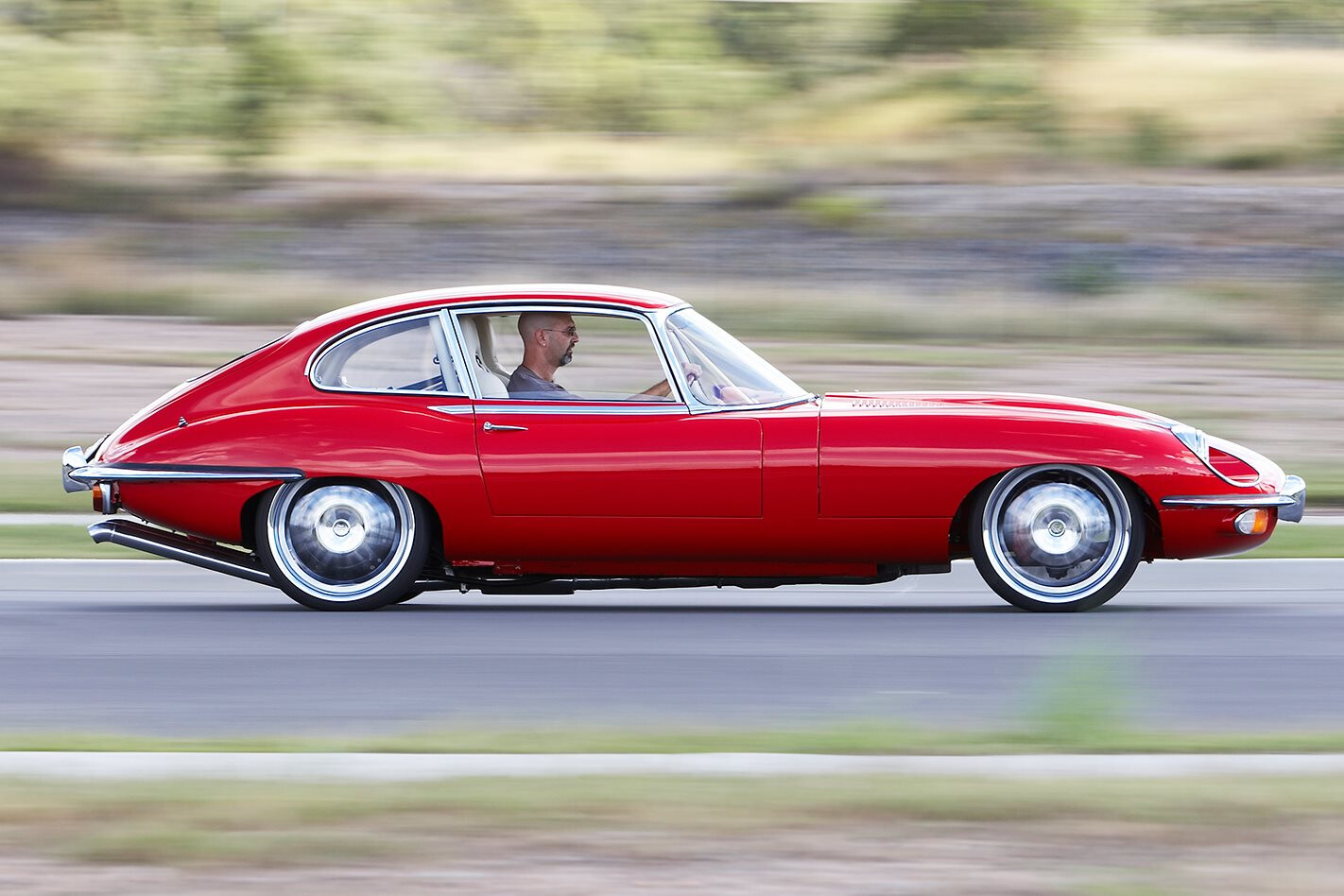
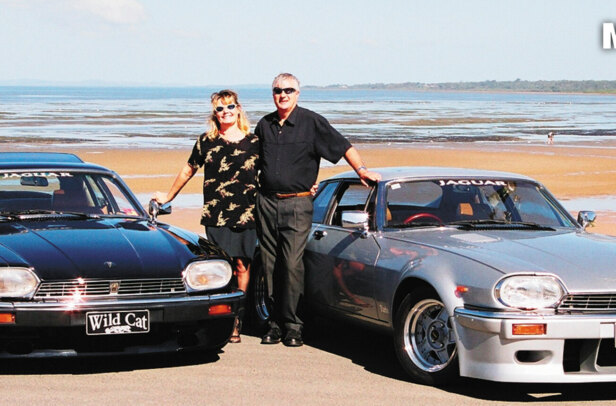
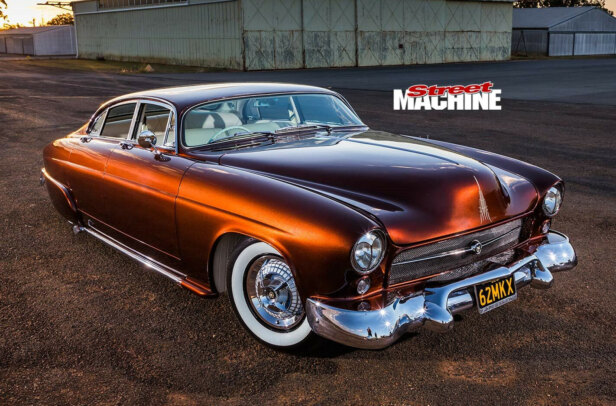
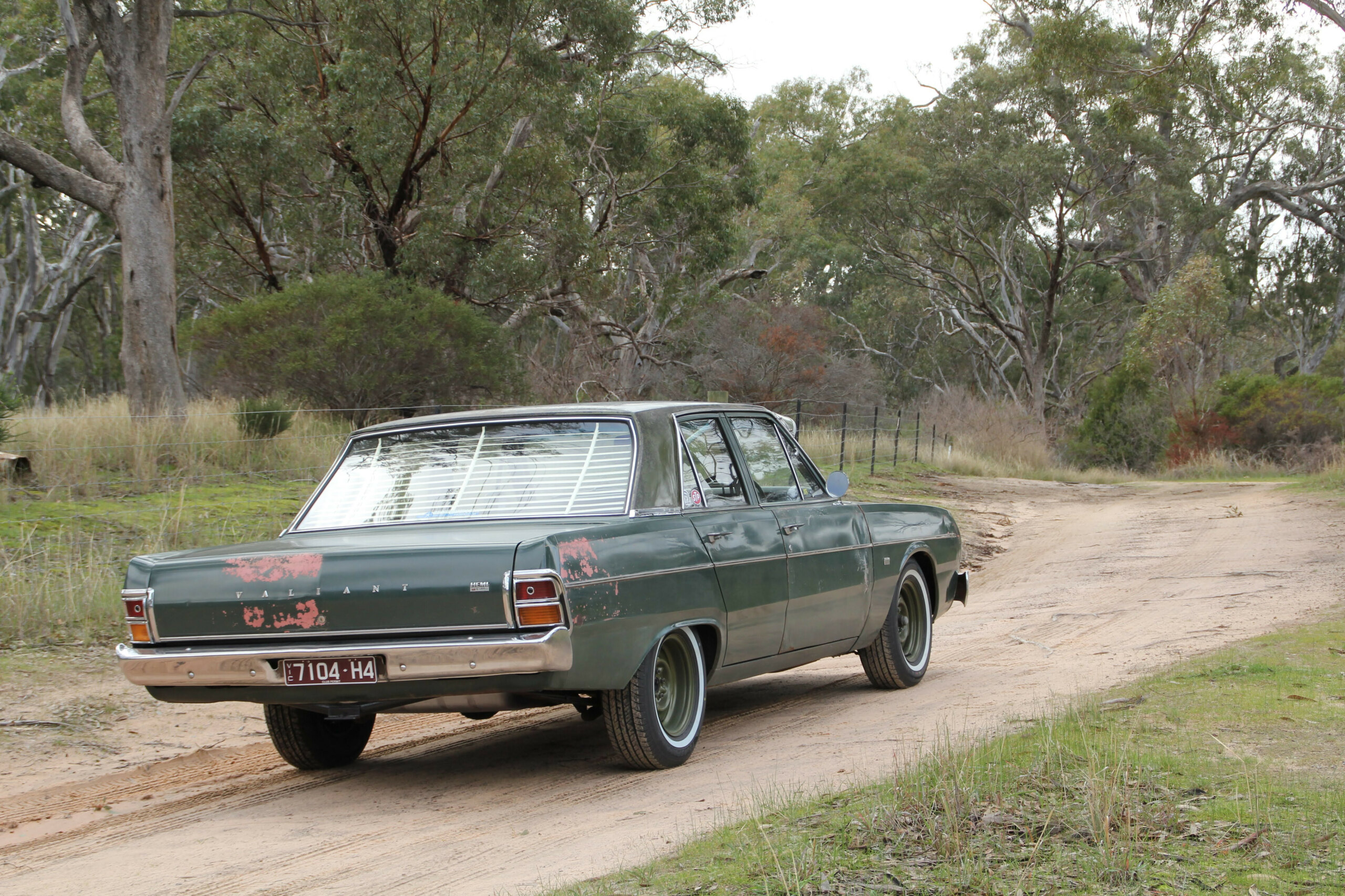
Comments